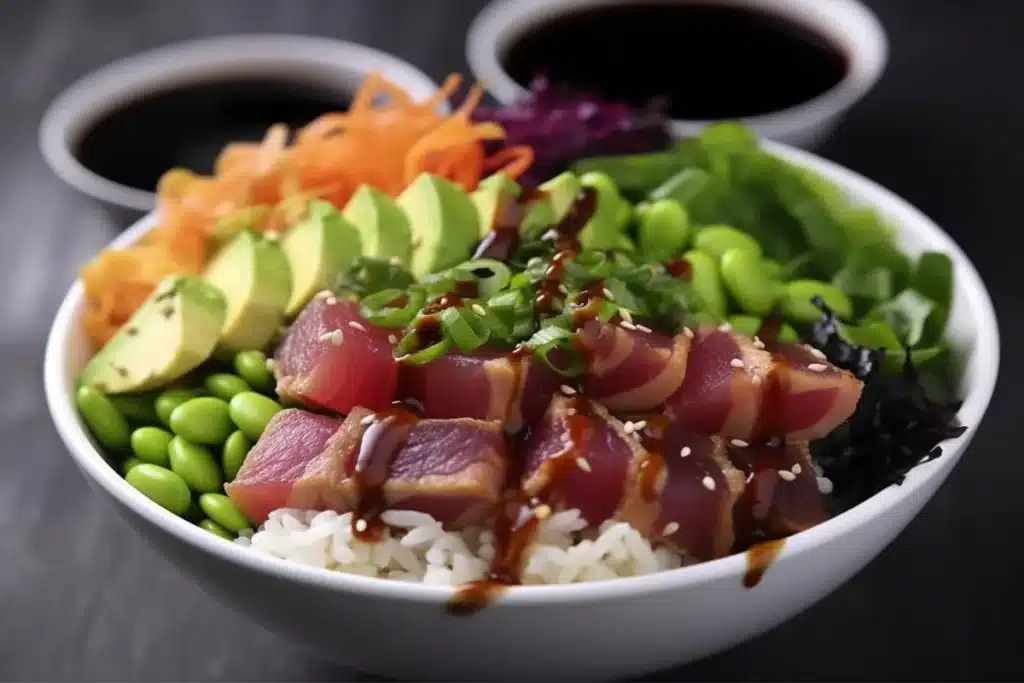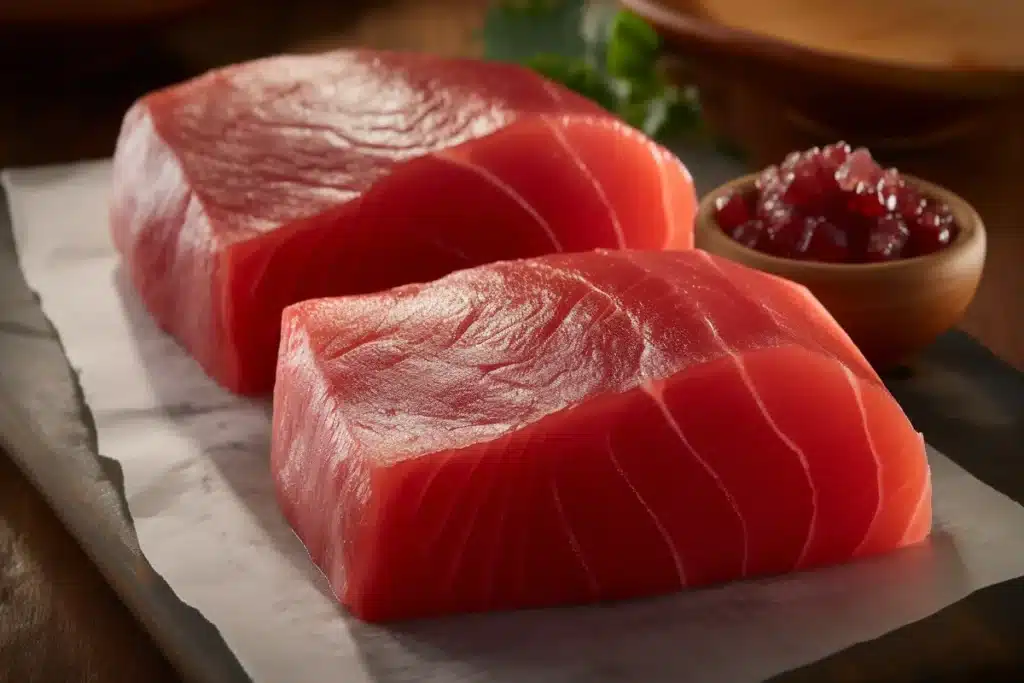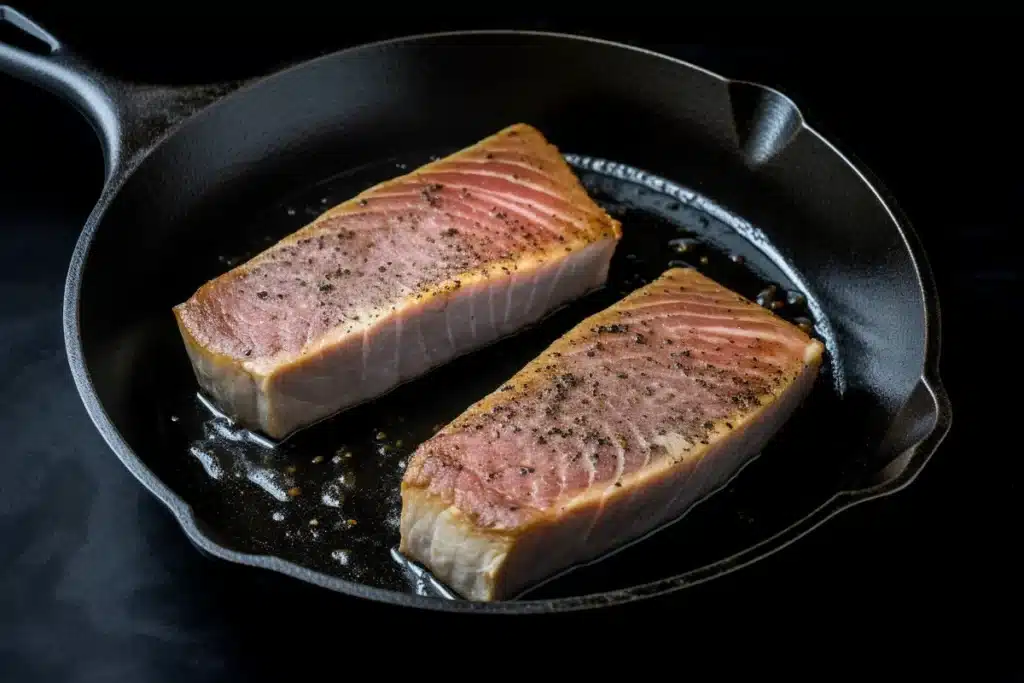Discover a delightful ahi tuna recipe that is both easy and delicious. This article will guide you through making perfect seared ahi tuna at home, ensuring a flavorful and healthy meal.
Simple Ways to Enjoy Ahi Tuna
Ahi tuna is a fantastic choice for a quick, tasty meal. This versatile fish is not only delicious but also offers many health benefits. Therefore, incorporating ahi tuna into your diet is a smart move. Let’s explore several easy recipes featuring ahi tuna that you can try today.
Basic Seared Ahi Tuna
Firstly, let’s start with a simple seared ahi tuna recipe. This method is quick and keeps the tuna tender. Begin with high-quality ahi tuna steaks. Next, season the ahi tuna generously with salt and pepper. Moreover, you can add a touch of garlic powder for extra flavor. Now, heat a pan over high heat. Add a little oil and sear the ahi tuna for about 30 to 60 seconds per side. Finally, serve this seared ahi tuna immediately for the best experience of this ahi tuna recipe.
Ahi Tuna Salad
Secondly, consider a light and refreshing ahi tuna salad. This makes a great lunch or light dinner option. Start with cooked and chilled ahi tuna. Cut it into bite-sized pieces. Then, combine the ahi tuna with chopped lettuce and other vegetables. For instance, add cucumbers, tomatoes, and red onion. Finally, use a light dressing of lemon juice and olive oil to complete this ahi tuna salad. It is simple, satisfying, and highlights the freshness of the ahi tuna.
Ahi Tuna Bowls
Thirdly, ahi tuna bowls are another great way to enjoy this fish. Start by cooking a base like rice or quinoa. Then, place the cooked ahi tuna on top. Next, add other toppings such as avocado, edamame, and seaweed. A drizzle of soy sauce will enhance the flavor of your ahi tuna bowl. Furthermore, add a bit of sriracha for some heat. It is an easy meal to customize and enjoy, showcasing the flexibility of cooking with ahi tuna.

Preparing Your Ahi Tuna
Choosing high-quality ahi tuna is essential for creating a delicious ahi tuna dish. Look for tuna steaks that are vibrant red with a fresh, clean scent. Avoid tuna that appears brown or has a strong, fishy odor, as these are signs it is not fresh. Freshness is the key to achieving the best results in your ahi tuna recipe.

Selecting High-Quality Ahi Tuna
First, when selecting ahi tuna, freshness is key. High-quality ahi tuna is vibrant and firm. The flesh should be a deep red, almost purple. Additionally, it should not be slimy or have a strong odor. These characteristics indicate its freshness, essential for making the best ahi tuna. Therefore, choose your ahi tuna carefully for the best results in your recipe.
Proper Storage of Ahi Tuna
Next, proper storage is important if you’re not using the ahi tuna right away. Keep the ahi tuna steaks in the coldest part of your refrigerator. Place them in a sealed container. Moreover, use them within one to two days for optimal quality. Freezing ahi tuna is also an option. However, be sure to wrap it tightly to prevent freezer burn. This will ensure the freshness of your ahi tuna when you are ready to use it in your ahi tuna recipe.
Safe Handling of Ahi Tuna
Proper handling of ahi tuna is crucial to prevent cross-contamination. Always wash your hands before and after handling raw fish, and use separate cutting boards and utensils for preparation. If cooking thoroughly, ensure the tuna reaches a safe internal temperature to minimize the risk of foodborne illness. Following these safety practices guarantees a safe and enjoyable experience with your ahi tuna dishes.
Cooking Methods for Ahi Tuna
There are many ways to cook ahi tuna. Searing is most common. However, you can also grill or even use it raw in dishes like ahi tuna poke. Each method changes the taste and texture of the fish. Therefore, choose the method that best suits your taste and the ahi tuna recipe you’re using.
Searing Ahi Tuna Perfectly
Searing ahi tuna is a quick and easy way to cook it. First, use a hot pan with a little oil. Next, sear each side of the ahi tuna for 30 to 60 seconds. The goal is to have a lightly cooked outside with a raw or rare center. Moreover, this cooking method keeps the ahi tuna tender and flavorful, highlighting its natural taste in your ahi tuna recipe.

Grilling Ahi Tuna for a Smoky Flavor
Grilling is another fantastic way to prepare ahi tuna. First, preheat the grill to medium-high heat. Then, lightly oil the grates to prevent sticking. Next, grill the ahi tuna for a few minutes per side. The timing will depend on the thickness of the steaks. Grilling adds a smoky flavor to the ahi tuna. This makes it a great option for summer meals, providing a different flavor profile for this fish and a welcome change to traditional ahi tuna recipes.
Enjoying Raw Ahi Tuna
Eating raw ahi tuna, like in sushi or poke bowls, is also a delicious option. However, always make sure you buy sushi-grade ahi tuna. This means it has been handled in a way to ensure it is safe to eat raw. Furthermore, proper handling of raw ahi tuna will prevent foodborne illnesses, ensuring a safe and enjoyable raw ahi tuna experience.
Seasoning and Flavoring Ahi Tuna
Proper seasoning can enhance the natural flavor of ahi tuna. Therefore, it is crucial to choose the right spices and herbs for your ahi tuna dish. Start simple. Then, adjust according to your taste. You can experiment with different flavor profiles when preparing your ahi tuna.
Simple Salt and Pepper
Sometimes, less is more. A simple seasoning of salt and pepper can enhance the natural flavor of ahi tuna. Moreover, fresh ground black pepper works particularly well. This allows the taste of the ahi tuna to shine through. Furthermore, it is quick and easy, and is a classic way to season ahi tuna.
Soy Sauce and Ginger
For an Asian-inspired flavor, use soy sauce and ginger. These add depth to the taste of the ahi tuna. Moreover, fresh ginger is best. However, ground ginger also works in a pinch. Furthermore, you can add a bit of garlic for an extra layer of flavor. These create a complimentary flavor profile for ahi tuna.
Sesame Seeds for Texture
Sesame seeds not only add flavor but also texture to your ahi tuna dish. Toasting the sesame seeds first will bring out their nuttiness. Additionally, it adds a visual appeal to your ahi tuna. Finally, you can mix black and white sesame seeds for an interesting look, enhancing the overall presentation and taste of your ahi tuna recipe.
Serving Suggestions for Ahi Tuna
Ahi tuna is a dish that pairs well with many sides. Therefore, experiment with different combinations when serving your ahi tuna. For example, use rice, vegetables, or salads. The goal is to create a satisfying and flavorful meal with your ahi tuna.
Ahi Tuna with Rice and Vegetables
Ahi tuna is a good match with a side of rice and fresh vegetables. Brown rice, white rice, or even quinoa are good choices. Furthermore, include steamed or roasted vegetables. Broccoli, carrots, and asparagus are particularly suitable. This provides a well-balanced meal, complimenting the ahi tuna.
Ahi Tuna with a Light Salad
Another great way to serve ahi tuna is with a light, refreshing salad. For instance, mix together lettuce, cucumbers, and tomatoes. Then, add a light vinaigrette dressing. This provides a nice contrast to the richness of the ahi tuna. Also, it is a satisfying and light meal, perfect for showcasing the freshness of your ahi tuna.
Ahi Tuna with Avocado
Avocado adds a creamy texture to your ahi tuna dish. Simply slice some avocado and place it next to the ahi tuna. Or, you can mash the avocado to create a guacamole. Additionally, you can add a pinch of salt and pepper. This combination is a refreshing and indulgent experience with your ahi tuna.
Health Benefits of Eating Ahi Tuna
Ahi tuna is not just delicious. It is also packed with beneficial nutrients. Therefore, including it in your diet can improve your health. It contains protein, vitamins, and healthy fats. These benefits make ahi tuna a great addition to a healthy diet.
Protein-Rich Food
Ahi tuna is a protein-rich food that is important for maintaining muscle mass. Also, protein is an essential nutrient for growth and repair. Moreover, it keeps you feeling full and satisfied. Therefore, this makes it a good choice for weight management, as well as being a good source of protein.
Source of Omega-3 Fatty Acids
Ahi tuna is a good source of omega-3 fatty acids. These are good for heart health and brain function. Omega-3s also have anti-inflammatory properties. Therefore, eating ahi tuna can support your overall health, making it a beneficial choice.
Rich in Vitamins and Minerals
In addition to protein and omega-3s, ahi tuna also contains a range of vitamins and minerals. It includes vitamin B12, vitamin D, and selenium. These nutrients support various bodily functions. Moreover, these are essential for maintaining a balanced diet, further enhancing the nutritional value of ahi tuna.
Frequently Asked Questions About Ahi Tuna
Here are some common questions about cooking ahi tuna. These will help you to prepare the best dish. Accordingly, we will answer your most frequently asked questions. This ensures you have all the information you need to make perfect ahi tuna.
How is ahi tuna best cooked?
Ahi tuna is best cooked briefly to keep it tender and juicy. Searing it on high heat for 30 to 60 seconds per side will provide a lightly cooked outer layer with a raw or rare center. Ultimately, it should be tender and flavorful, making it a satisfying ahi tuna dish.
How does Gordon Ramsay cook ahi tuna?
Gordon Ramsay typically sears his ahi tuna quickly in a hot pan, focusing on achieving a flavorful crust. He often uses olive oil and seasons generously with salt and pepper. Moreover, he often serves his ahi tuna with a fresh salad or vegetables, ensuring a well-balanced meal.
What seasonings are good on tuna?
Several seasonings work well with tuna. Simple salt and pepper are always a good choice. Additionally, you can use soy sauce, ginger, garlic, and sesame seeds for an Asian-inspired flavor. Furthermore, chili flakes can add a bit of heat, allowing for variations in flavor profiles with ahi tuna.
Is it better to sear tuna in butter or oil?
Generally, it’s better to sear tuna in oil. Oil has a higher smoke point than butter, which makes it better for high-heat cooking methods. While butter provides a delicious flavor, it may burn too quickly at high temperatures. Therefore, oil, such as olive or canola, is generally preferable for searing ahi tuna.
Conclusion
In conclusion, the ahi tuna recipe offers a versatile and delicious way to enjoy this nutritious fish. From simple searing techniques to refreshing salads and satisfying bowls, there are endless ways to prepare ahi tuna. Remember to select fresh, high-quality ahi tuna and season it to your taste. With these tips and tricks, you can easily create amazing ahi tuna dishes at home. Therefore, experiment with various methods, complement different pairings, and explore the flavor variations. For more inspiration, check out unique recipes like the Cottage Cheese Eggs Recipe on TastyQuirk. Enjoy your culinary experience and elevated meals with this fantastic ahi tuna recipe.


1 thought on “Ahi Tuna Recipe”